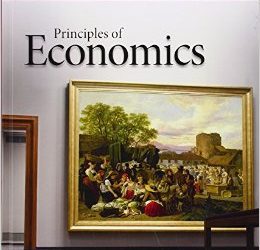Editor’s Note: Today’s post is by Gwen Evans, Executive Director of OhioLINK, and continues on from yesterday’s post.
In yesterday’s post, I described why OhioLINK chose a multi-pronged approach to textbook affordability, encompassing traditional library models, Open Educational Resources initiatives, and branching out into negotiations with commercial textbook publishers. OhioLINK isthe state agency for 118 higher education libraries, covering 91 member institutions in Ohio and includes all public and most private institutions, from research universities to two year and special focus colleges and schools. Moving into negotiations at the statewide level for commercial textbooks required building on the traditional strengths of library consortia while engaging an entirely new set of stakeholders, financial models, and data aggregation challenges.

To secure students at our member institutions the best possible pricing, OhioLINK used our experience in negotiating for collective content deals and our understanding of the textbook market based on our engagement with Open Educational Resources (OER) efforts as well as with traditional scholarly publishers. We struck price agreements (not content purchases) at the statewide level, rather than at the level of individual institutions, for inclusive access textbooks and courseware.
If your consortium is contemplating a similar approach, here’s our advice for library consortia (or even individual libraries) considering adding commercial textbook agreements to their activities:
- Leverage the outrage about the rising cost of textbooks.Take the opportunity to lead. After all, librarians are already well-versed in expressing outrage about the high cost of academic materials. With textbooks, the actual end-consumers of the materials care deeply about the issue and are right there with us.
- Remember everything you know about negotiating consortial deals.Your ability to deliver volume; lower administrative overhead for the publishers because they are dealing with one entity instead of every institution (or faculty member) individually; terms and conditions that are standardized and cover everyone instead of highly individualized contracts; and a strategy to deal with the long tail of smaller publishers that you don’t have the capacity or desire to manage – all of these are value-adds that you can bring to the table in your consortial negotiations with publishers.
- Forget most of what you know about negotiating for library content.The economics of textbooks is fundamentally different. Ebook multiplier models and database subscription models simply won’t work with textbooks at scale. It’s critical to define exactly what is already assigned in courses in your system or state, because the faculty work involved in changing a syllabus is lengthy and requires a lot of thought. The last thing you want is a collection of content that mightbe assigned. If faculty will have to work to change their syllabus and adopt new materials anyway, then promote OER instead (while being careful to avoid undermining the faculty’s academic freedom).
- Understand the economics of publishing.Textbooks or library content – how are publishers making (or not making) money? Textbook publishers are under growing financial pressure; they began to raise their prices because the rental and used book markets were bleeding off their revenue. Understand why inclusive access helps solve that for them, and why they are willing to discount their pricing in this model. By working to disrupt the used book and rental markets, we’re doing publishers a favor. Thus, more textbook sales through inclusive access should mean that prices go down over time. As for courseware, that requires a different strategy, one oriented towards different market pressures.
- Don’t make your relationship with OER exclusive. Librarians have been at the forefront of promoting OER for some time now. But don’t make an exclusive commitment to OER. You will have to be prepared to explain why you are not sticking to OER alone to the true believers among the OER community. Don’t overlook the fact that the sheer scale and variety of what is available commercially and already assigned in courses vs OER materials, faculty priorities and course revision timelines, etc. mean that inclusive access is a way to lower prices for students very quickly without persuading individual faculty to change their content, courses, and syllabi. What’s your priority? A commitment to open pedagogy can run parallel to a commitment to lowering costs for students in the next semester.
- Run an RFI (Request for Information) for publishers and involve your members.OhioLINK put together an RFI with demos that was enormously productive in understanding the relationships between publishers, etextbook delivery platforms, campus bookstores, and other relevant campus units like the bursar’s office and campus IT. The RFI clarified where OhioLINK could negotiate in ways that would benefit the entire consortium and not leave any of our institutions out. It also clarified which entities (publishers) controlled the elements we cared most about – price and length of access. What we learned and confirmed from the RFI responses led to the pricing model on which we settled.
- Existing contracts will usually prevent you from mandating anything to bookstores. Institutional contracts with chain bookstores and independent bookstores on campuses are many and varied, and often restrict how an institution can offer textbooks, define markup and revenue sharing, etc. We quickly realized that we needed a model that accommodated contracts already in place. The OhioLINK agreement allows our member institutions to do what they are already doing with inclusive access, only at a lower price. If they aren’t doing anything with inclusive access yet, having a pre-negotiated and established pricing model makes it easy for them to get started.
- Expect to spend some time explaining to textbook publishers what your expectations are and how consortia work.The most productive explorations started with Wiley, because our existing reps and contacts on the scholarly content side introduced us to their textbook side. We were a bit amused when other publishers emailed us their contracts and price offers and simply expected us to sign them.
- Know what students and faculty care about in their textbooks and how it relates to inclusive access. Faculty and administrators care that thecontent is already assigned in their classes and that digital content can be easily integrated into course management and other campus systems; students care about lower costs and perpetual access or access that covers the length of time students are in school, and about how much can be printed and whether texts are downloadable to devices and available offline. Opt-out procedures for students must be clearly communicated. Publishers control many of those factors. (Note to publishers – inclusive access that only covers the length of a course? That’s a digital rental, and if students are going to rent, they prefer print. Libraries – negotiate accordingly.)
- Know what you, as a consortium, are getting out of it and what you are giving to the publishers. Our model doesn’t involve OhioLINK actually purchasing or contracting for anything. What we are providing is a statewide marketing plan for inclusive access, excellent negotiating skills, and the ability to include almost all institutions of higher education in the state of Ohio in one agreement. We are gathering business intelligence, especially competitive prices across formats and in other markets, and communicating that information at the institutional and statewide level. What did we get out of it? Giving some immediate relief for students in textbook costs, which we and our members care deeply about. Some fame and adulation (you’d be surprised at how often students and former students respond to OhioLINK staff like we are rock stars when we say where we work). More importantly, by using our expertise in new initiatives that are a high priority for our parent agency, our member institutions, and the legislature, we show the value and power of our organization.
Finding affordability “wherever it lives”
As Bob Butterfield of University of Wisconsin-Stout, which has been doing textbook provision for students since its founding in 1891, advised the audience at our State of the State textbook affordability panel, “Don’t put all your eggs in one basket.” His book chapter “Building on History: Providing Affordable Course Content at the University of Wisconsin-Stout” details the continual challenges that a textbook affordability program faces, and the need for an agile, adaptive approach: – ‘Its success does not come from a single, catch-all approach to reducing cost, but from a systematic method that searches for affordability “wherever it lives.”’
Because it means rebuilding a course with completely new materials, OER adoption requires major investments of thought, effort, time, and expertise as the instructor seeks to ensure that the materials match the needs of both the students and the instructor. It takes time and is difficult to scale. At the end of the day, curriculum reform is time-intensive, even when faculty are dedicated to it.
Inclusive access, at this moment, offers swift benefits to all parties, giving publishers an incentive to drop prices and simultaneously giving institutions the opportunity to deliver cost savings to their students quickly and at scale. Inclusive access delivers savings across the board—from general education and high-enrollment courses to specialized and upper-division courses. And this can happen while the institution still pursues OER initiatives, curriculum reform, and other affordability strategies.
OhioLINK is bringing several strategies and initiatives to bear on lowering costs as much as possible, to as many students as possible, in as short a timeframe as possible. We will continue to pursue textbook affordability on behalf of our members, remaining open to what makes strategic sense on a statewide scale and benefits our students across the whole of their time in higher education.
Discussion
5 Thoughts on "Affordable Learning Requires a Diverse Approach, Part 2: Applying Consortial Power to Leverage Student Savings"
Agree with most of this. In a nutshell I think message for librarians is be bold, look at things totally differently and set/lead the agenda you want to follow with publishers.
I just don’t get it! Why is a librarian involved in the textbook selection process? What does the librarian know about teaching calculus or thermodynamics or english lit? Why would a professor agree to using a book that s/he sees as inadequate for their course because it costs less! I have been on campuses where three different books are being used by each individual prof for the different sections of the same course.
What I see above is basically the el/hi school adoption process where a state adopts a reading program or math series.
If memory serves a college publisher sells the text to the bookstore for X and the bookstore marks it up. If, a publisher agrees to make the book available at the bookstore price what they are doing is simply eliminating the bookstore but not affecting their bottom line. Of course, the bookstore can undercut the consortia price by dealing almost exclusively in used books – which is what they do now!
Are all publishers of textbooks members of OhioLink?
How have professors responded to OhioLink? And, are the professors in Ohio using only OhioLink materials?
Librarians, and OhioLINK, are not involved in the textbook selection process at all. What we did was negotiate lower prices for textbooks that are already in use by faculty at their institutions, by negotiating lower prices for a *particular model of delivery and payment* across the state. We aren’t involved in implementing the inclusive access model, that is an individual campus decision and there is no mandate either at the campus or individual faculty level. Yes, bookstores still apply their retail markup. However, there are ways to monitor inclusive access pricing against market prices for used, rental and print (we are using VerbaConnect to check prices). In general, the pricing for inclusive access is lower because of publisher sell-through for many reasons. I highly recommend reading the resource referenced the posts to understand how the model works. https://open.lib.umn.edu/affordablecontent/chapter/inclusive-access-who-what-when-where-how-and-why/ and https://www.insidehighered.com/news/2017/11/07/inclusive-access-takes-model-college-textbook-sales.
This sums it up pretty well: “The OhioLINK agreement allows our member institutions to do what they are already doing with inclusive access, only at a lower price. If they aren’t doing anything with inclusive access yet, having a pre-negotiated and established pricing model makes it easy for them to get started.”
You are entirely wrong, Harvey. Not just a little bit: entirely. First, let me disclose that Gwen Evans/OhioLINK is a client and that we advised her on this project. Second, the library emphatically does NOT make any title selections. The faculty makes those selections. Academic freedom is baked into these agreements. No faculty member has to choose a book that they do not want. The inclusive access program is not comprehensive–that is, many other books are used on the OhioLINK campuses. OhioLINK simply negotiated deals for the most used titles from the largest publishers. The program could expand, but it is useful even if it remains the size it is. Finally, you have not understood that publishers can make as much or more money from these programs, as they mostly eliminate piracy and used books. It’s a win-win, and we are proud to have played a hand in it.
Joe and Gwen: thank you for the clarification. What you describe did not come out in the article thus my questions and comments. Is there any measurement that demonstrates that the process lowers the price to students? Are students getting a better deal than say buying a used book?
The last time I was in the college market a prof could get about 50 percent of the retail price for his desk copy and a student about 33% if the book was to continue being used on campus. Are publishers giving these kinds of discounts on new books?


